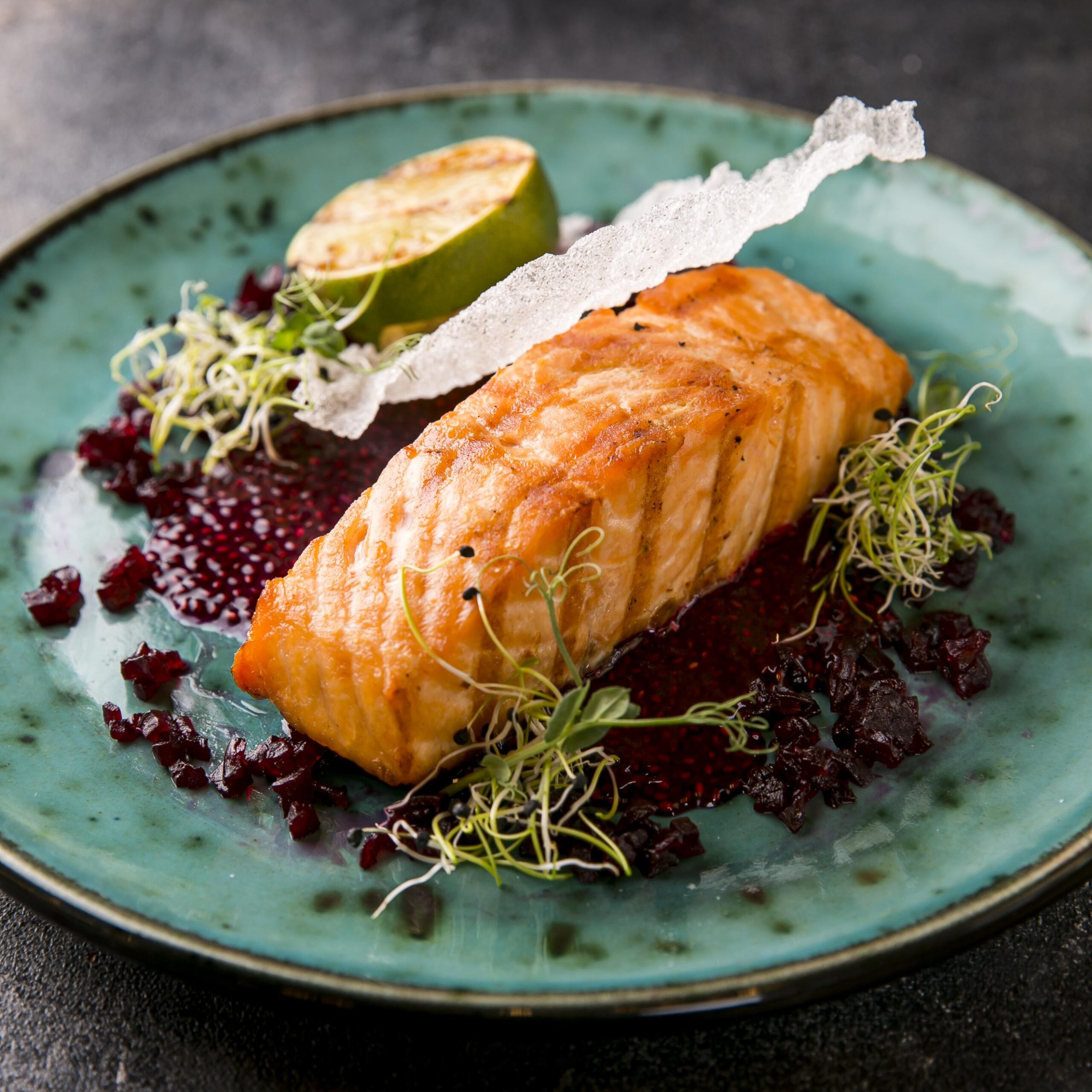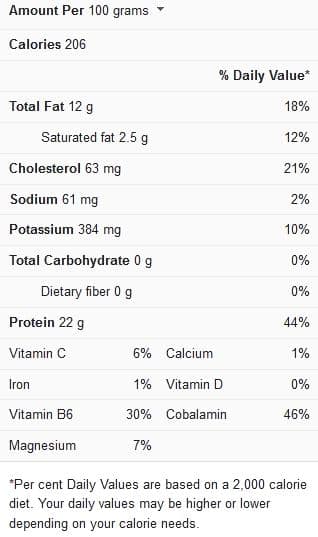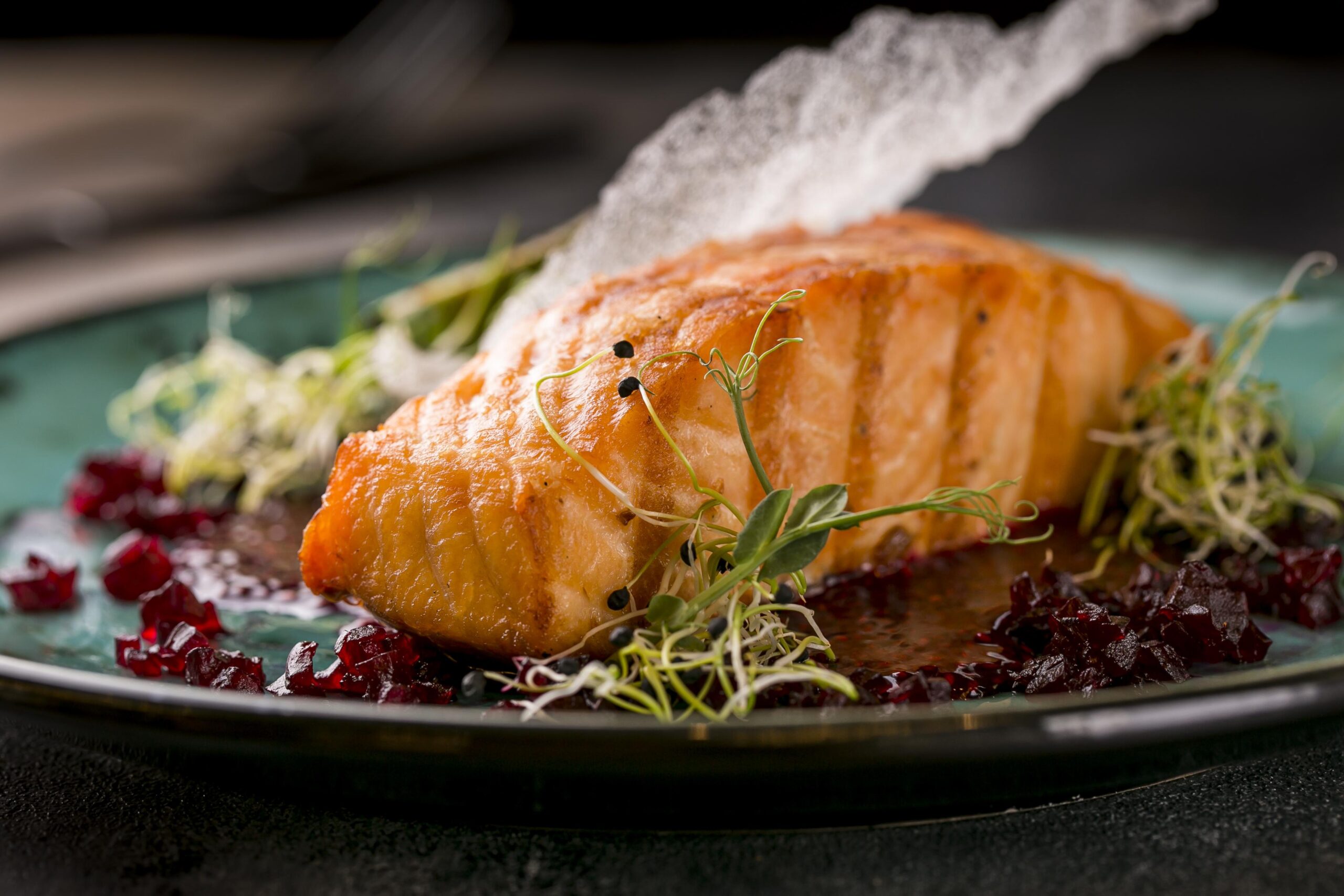Because many species of fish are delicate and fragile, overcooking is one of the most crucial things to avoid. It’s easy to be intimidated by cooking seafood because it may swing from underdone to overcooked and dry in a matter of seconds. Fortunately, understanding how to tell when fish is done is the secret to skillfully cooked fish.
In this article, we have provided a number of helpful tips on the signs that indicate if your fish is cooked correctly. Pay attention to these tips, and you’ll never have to worry about undercooked or overcooked fish ever again.

Fish Nutrition Facts

Tips to tell if Fish is Cooked
Cooking fish is sometimes tricky, especially if you don’t know what to look out for. There are some visual clues to help in determining whether or not your fish is done, and they require no extra equipment. Your fish has reached the right cooking temperature when it shows the following signs:
- Opacity in color: Fish looks shiny and translucent when you first start frying it. When it’s finished, the fish will be transparent.
- Easily flaked with a fork: When the fish is done, use a fork to poke it, it should typically flake apart.
Undercooked fish is transparent and typically resists flaking. If your fish appears to be undercooked after you’ve attempted flaking it, simply keep heating it until it is fully cooked. It is, however, important to keep in mind that fish cooks quickly, so keep an eye on it. Another way to avoid overcooking is to check the fish at the end of the minimum cooking duration.
The Flaking Technique
Pay attention if you’re not sure how to flake fish using a fork. This tried-and-true testing method is simple to learn.
- Simply place the tines of a fork at a 45° angle into the thickest part of the fish.
- Pull up some of the fish with a gentle twist of the fork. The fish is done if it flakes readily and without resistance.
Checking the Internal Temperature
The flaking fork test and opaque color are excellent indicators that fish is done cooking, but you may still need to check the fish’s internal temperature just to make sure. The FDA recommends that cooked fish be cooked to a safe temperature of 145°F. To check this, use an instant-read thermometer.

Using a Cake Tester
To test if it’s warm, insert a cake tester into the thickest section of your fish. This restaurant trick is quite great because it helps to avoid damaging a delicate filet. A cake tester is a culinary utensil used to determine when baking a cake.
Place the thin metal rod on the fish’s thickest section and keep it there for three seconds. Remove it and press the tip of the cake tester on the skin beneath your lower lip. If the fish is warm, it has completed its cooking process.
This is an excellent tip for delicate fish like flounders, which can fall apart if checked with a fork.
View this post on Instagram
Be on the Lookout for a Crispy Texture
Your fish is most likely done when it’s crispy. Skin-on fish should always be fried skin-side down to crisp up the skin. Lift the fish with a spatula to inspect the skin. It’s done cooking if it’s firm and crispy, especially if it’s a thin filet.
The “Pressing-down” Technique
With this simple test, you can cook ideal medium salmon. Salmon possesses the juiciest quality when it is cooked to a medium temperature instead of being thoroughly cooked, which can make it rather dry and chalky. Gently press down on the top of the salmon filet with a fork or your finger. It’s ready to go if the flesh separates readily along the white lines that run across it.
Albumin Presence
When a fish, such as salmon, is cooked, albumin, a white material, may develop. The presence of albumin indicates that the fish has finished frying. Some fish, such as cod or trout, lack albumin, so this technique may not work with them.
Use the 10-Minute Rule.
To avoid undercooking, follow this easy rule of thumb. The thickest section of the fish should be measured. For every 1 inch (2.5 cm) of thickness, estimate 10 minutes of cooking time. To ensure consistent cooking, cook each side for half of the overall time. For example, a 1 inch (2.5 cm) thick filet should be cooked for 5 minutes on each side.
Add an extra minute, if necessary.
Fish is delicate, and it is quite easy to get overcooked. If it isn’t quite done when you check it, don’t cook it for too long before checking it again. Wait about a minute, and then check to see whether it’s finished.
You could also poke a hole in the filet with a toothpick or a metal skewer. It isn’t done cooking if it doesn’t simply slide through the filet. It’s possible that it’s been overcooked if it’s hard.
View this post on Instagram
Choose Undercooking, Sometimes
Sometimes it’s better to undercook your fish; in fact, most people prefer fish that is still translucent in the middle. There is no risk in eating some fish raw as long as you observe food safety requirements in the kitchen (keep your ingredients cool, prevent cross-contamination).
All Sea to Table fish is flash-frozen to a temperature of more than -30 degrees at sea or at the dock, so any risk is eliminated. Sea to Table fish is, in fact, safe and suitable for raw preparations such as sushi, poke, and gravlax.
Conclusion
Basically, there are many ways to find out if your fish is undercooked or properly done. One advice is to always err on the side of undercooking fish, as that is definitely healthier than overcooked versions. As long as your fish has reached a safe internal temperature, it’s good to eat.
If you don’t trust your judgment with all the testing techniques described above, a thermometer is your safest bet to test your fish’s doneness. But essentially, all the pointers above should be pretty obvious and help you arrive at desirable results with fish recipes.
